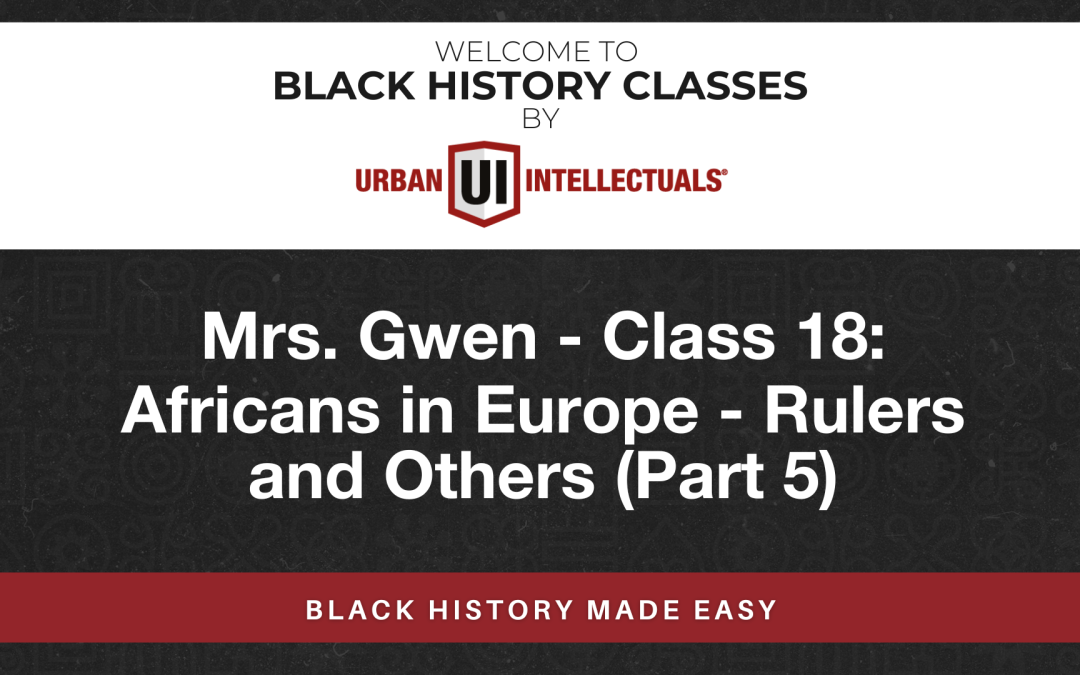History
Sara Forbes Bonetta. Born as Aina (or Ina) in 1843 in what is now southwestern Nigeria, she was a member of the Egbado clan of the Yoruba people. Her life took a dramatic turn when her village was attacked by the Kingdom of Dahomey, leading to the death of her parents and her capture.
Aina was enslaved and brought to the court of King Ghezo of Dahomey. In 1850, she was given as a “gift” to Captain Frederick E. Forbes of the British Royal Navy, who was on a mission to persuade King Ghezo to end the slave trade. Captain Forbes brought her to England and presented her to Queen Victoria, who took a keen interest in her.
Queen Victoria became her guardian and sponsored her education. Sara was affectionately called “Sally” by the Queen and was considered a goddaughter. She lived with the Forbes family for a time and later married Captain James Pinson Labulo Davies, a wealthy Lagos philanthropist.
Sara Forbes Bonetta’s story is a remarkable example of resilience and adaptation, moving from a life of captivity to becoming a respected member of British society.
Is there anything specific you’d like to know more about her life or her connection with Queen Victoria?
What was Sara Forbes Bonetta’s education like?
Sara Forbes Bonetta received a high-quality education, which was quite rare for someone of her background during that time. After being brought to England, she was placed under the guardianship of Queen Victoria, who took a personal interest in her upbringing and education.
Sara attended a school in Freetown, Sierra Leone, for a period, where she was educated alongside other children of African descent. This was part of an effort to provide a Western-style education to children from Africa. Later, she returned to England and continued her education there, benefiting from the resources and opportunities provided by her connection to the British royal family.
Her education included learning to read and write, as well as studying subjects such as mathematics, history, and geography. She was also taught music and other cultural subjects, which were considered important for a young lady of her status.
Sara’s education and upbringing allowed her to navigate both British and African societies with ease, making her a unique and influential figure of her time.
Is there anything else you’d like to know about her life or her achievements?
Queen Victoria and Sara Forbes Bonetta had a unique and affectionate relationship. Queen Victoria took a personal interest in Sara’s well-being and education after she was brought to England. She considered Sara her goddaughter and often referred to her affectionately as “Sally.”
The Queen ensured that Sara received a high-quality education and was well cared for. Sara was frequently invited to visit the royal household, and Queen Victoria even attended her wedding to Captain James Pinson Labulo Davies in 1862. The Queen’s support and patronage provided Sara with opportunities that were rare for someone of her background at the time.
Their relationship was one of mutual respect and affection, and it played a significant role in shaping Sara’s life and legacy. Queen Victoria’s interest in Sara also highlighted the complexities of race, class, and colonialism during that era.
Is there anything else you’d like to know about their relationship or Sara’s life?
- Did Queen Victoria correspond with Sara after her marriage?
- What other notable figures were part of the British royal household during that time?
- Tell me more about Captain James Pinson Labulo Davies.
Sara Forbes Bonetta did return to Africa. After spending several years in England, she went back to Africa in 1851 to attend a school in Freetown, Sierra Leone. This was part of her education and upbringing under the guardianship of Queen Victoria.
Later in her life, Sara returned to Africa more permanently. In 1862, she married Captain James Pinson Labulo Davies, a wealthy Yoruba businessman and philanthropist, in a grand ceremony in England. After their marriage, they settled in Lagos, Nigeria, where Sara became a prominent figure in society. She and her husband had three children, and she continued to maintain her connections with the British royal family throughout her life.
Sara’s return to Africa allowed her to contribute to the social and cultural life of Lagos, and she remained an influential figure until her death in 1880.
Is there anything else you’d like to know about her life or her legacy?:
Did she marry and have children?
Sara Forbes Bonetta married Captain James Pinson Labulo Davies, a wealthy Yoruba businessman and philanthropist, in 1862. Their wedding was a grand affair held in Brighton, England, and was attended by many notable figures of the time.
Sara and James had three children together:
- Victoria Davies – Named after Queen Victoria, she was born in 1863.
- Arthur Davies – Born in 1871.
- Stella Davies – Born in 1873.
Sara’s marriage and family life in Lagos, Nigeria, allowed her to continue her influence both in African and British societies. She maintained her connections with the British royal family and was a respected figure in her community until her death in 1880.
Is there anything else you’d like to know about her or her family?:
What impact did her children have on Lagos society?
Sara Forbes Bonetta’s children, particularly her eldest daughter Victoria Davies, had a notable impact on Lagos society.
Victoria Davies was named after Queen Victoria and carried on her mother’s legacy of bridging African and British cultures. She became a prominent social figure in Lagos and was well-respected in the community. Victoria married a successful Lagos businessman, and their family continued to be influential in both social and economic spheres.
While there is less detailed information available about her other children, Arthur and Stella Davies, it’s known that the Davies family as a whole played a significant role in the development of Lagos. They were involved in various philanthropic activities and contributed to the growth of the city’s social and economic infrastructure.
The legacy of Sara Forbes Bonetta and her family is a testament to the enduring impact of her unique life story and the connections she forged between Africa and Britain.
Alexander Pushkin: The Great Russian Poet
Alexander Pushkin
Alexander Pushkin, often hailed as the greatest Russian poet and the founder of modern Russian literature, was born on June 6, 1799, in Moscow. He was a prolific writer, known for his poetry, novels, and plays. Some of his most famous works include the novel in verse “Eugene Onegin,” the drama “Boris Godunov,” and the fairy tale “Ruslan and Ludmila”12.
Pushkin’s heritage is quite fascinating. His great-grandfather, Abram Petrovich Gannibal, was of African origin and was brought to Russia as a gift to Peter the Great. Hannibal rose to prominence and became a notable figure in Russian history12.
Pushkin’s life was marked by his rebellious spirit and his clashes with the authorities, which led to periods of exile. Despite these challenges, he continued to write and produce influential works until his untimely death in a duel at the age of 3712.
Is there a specific aspect of Pushkin’s life or work that interests you?
ALEXANDER PUSHKIN’S VERSE NOVEL EUGENE ONEGIN:
A Form-True Dialogic Verse Translation With Lyrical Replies And Supplements
Eugene Onegin By Pushkin, Alexander By Thriftbooks
Tales Of Belkin And Other Prose Writings By Pushkin, Alexander By Thriftbooks
The Captain’s Daughter By Alexander Pushkin By Dent
The Gypsies: And Other Narrative Poems By Pushkin, Alexander By Thriftbooks
The Tale Of Tsar Saltan By Pushkin, Alexander Sergeyevich Pushkin, Aleksandr Sergeevich By Dial Books
Alexander Pushkin Eugene Onegin – Audiobook By Alexander Pushkin
Boris Godunov, Little Tragedies, And Others: The Complete Plays (Vintage Classics)
Eugene Onegin
“Eugene Onegin” is a novel in verse by Alexander Pushkin, considered one of the greatest works of Russian literature. It was published in serial form between 1825 and 1832, with the first complete edition appearing in 18331.
Plot Summary
The story revolves around Eugene Onegin, a disillusioned and world-weary aristocrat from St. Petersburg. He inherits a country estate from his uncle and moves to the countryside, where he befriends a young poet named Vladimir Lensky. Lensky introduces Onegin to the family of his fiancée, Olga Larina, and her sister, Tatyana.
Tatyana, a shy and romantic young woman, falls deeply in love with Onegin and writes him a heartfelt letter confessing her feelings. However, Onegin coldly rejects her, advising her to control her emotions. Later, in a fit of boredom and cynicism, Onegin flirts with Olga at a ball, provoking Lensky to challenge him to a duel. Tragically, Onegin kills Lensky in the duel and subsequently leaves the countryside.
Years later, Onegin returns to St. Petersburg and encounters Tatyana again, now a sophisticated and married woman. He realizes he loves her, but Tatyana, though still in love with him, rejects his advances, choosing to remain faithful to her husband.
Literary Significance
“Eugene Onegin” is notable for its innovative structure and style. Pushkin wrote the novel in iambic tetrameter with an unusual rhyme scheme, known as the “Onegin stanza” or “Pushkin sonnet” (AbAbCCddEffEgg). The work is admired for its exploration of themes such as love, rejection, and the clash between romantic idealism and societal expectations.
Opera Adaptation
The novel was adapted into a famous opera by Pyotr Ilyich Tchaikovsky, first performed in 1879. The opera closely follows the plot of Pushkin’s novel and is celebrated for its emotional depth and beautiful music.
Yasuke was a fascinating figure in Japanese history, known as the first African samurai. He arrived in Japan around 1579, accompanying the Italian Jesuit missionary Alessandro Valignano. Yasuke’s origins are somewhat unclear, but he is believed to have been from Mozambique.
Yasuke’s Journey in Japan
When Yasuke arrived in Japan, his presence caused quite a stir due to his height and dark skin, which were unusual in Japan at the time. He caught the attention of Oda Nobunaga, a powerful daimyō (feudal lord) who was intrigued by Yasuke and took him into his service. Nobunaga gave Yasuke the name “Yasuke” and treated him with great respect, even granting him the status of a samurai.
Service to Oda Nobunaga
Yasuke served Nobunaga during a tumultuous period known as the Sengoku period, a time of constant military conflict in Japan. He was present during significant events, including the Honnō-ji Incident in 1582, where Nobunaga was betrayed and forced to commit seppuku (ritual suicide)12. Yasuke fought bravely during this incident but was eventually captured and returned to the Jesuits12.
Legacy
Yasuke’s story is remarkable not only because of his unique position as an African samurai but also because it highlights the cultural exchanges that occurred during this period. His life has inspired various works of fiction, including books, films, and even an anime series.
Is there a specific aspect of Yasuke’s story that you find particularly intriguing?











